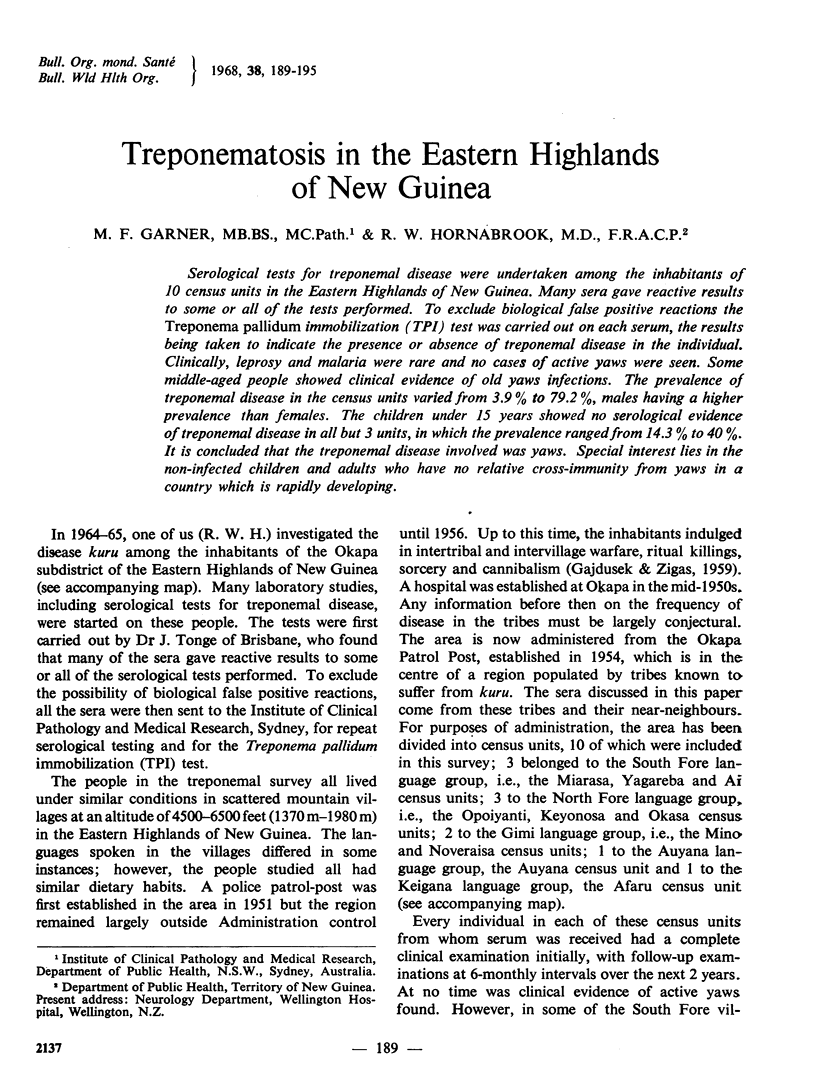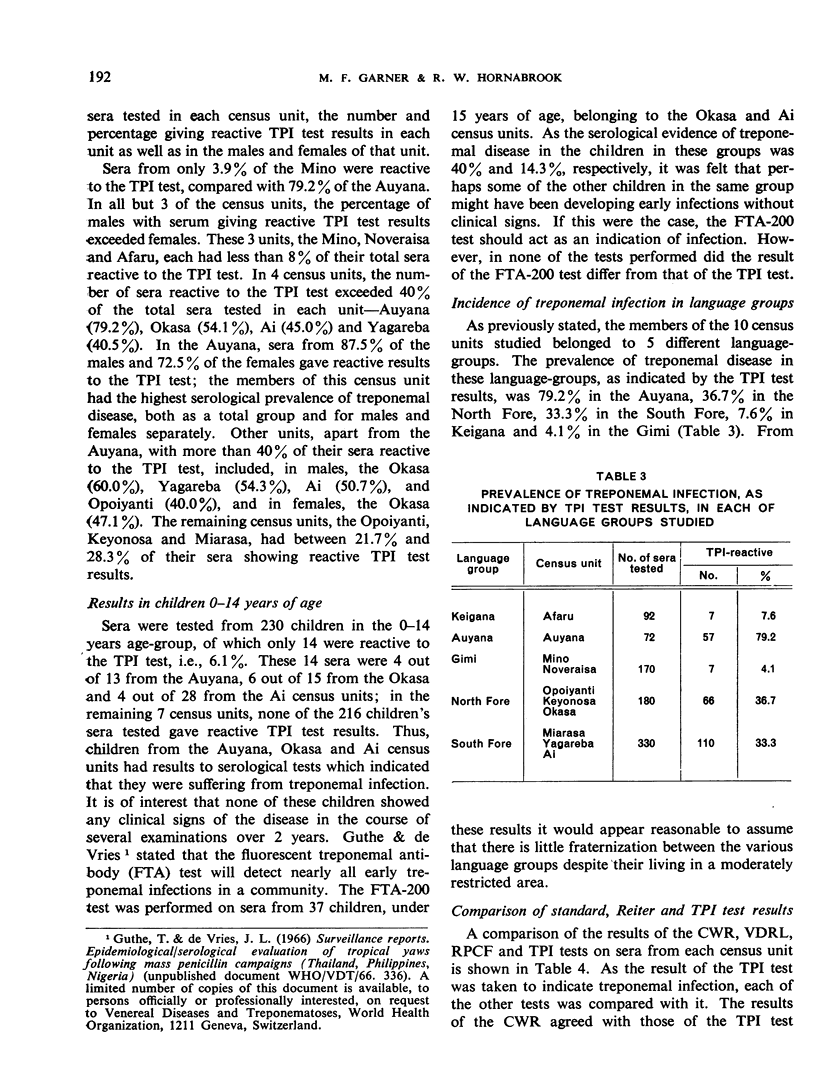Abstract
Serological tests for treponemal disease were undertaken among the inhabitants of 10 census units in the Eastern Highlands of New Guinea. Many sera gave reactive results to some or all of the tests performed. To exclude biological false positive reactions the Treponema pallidum immobilization (TPI) test was carried out on each serum, the results being taken to indicate the presence or absence of treponemal disease in the individual. Clinically, leprosy and malaria were rare and no cases of active yaws were seen. Some middle-aged people showed clinical evidence of old yaws infections. The prevalence of treponemal disease in the census units varied from 3.9% to 79.2%, males having a higher prevalence than females. The children under 15 years showed no serological evidence of treponemal disease in all but 3 units, in which the prevalence ranged from 14.3% to 40%. It is concluded that the treponemal disease involved was yaws. Special interest lies in the non-infected children and adults who have no relative cross-immunity from yaws in a country which is rapidly developing.
Full text
PDF






Selected References
These references are in PubMed. This may not be the complete list of references from this article.
- GAJDUSEK D. C., ZIGAS V. Kuru; clinical, pathological and epidemiological study of an acute progressive degenerative disease of the central nervous system among natives of the Eastern Highlands of New Guinea. Am J Med. 1959 Mar;26(3):442–469. doi: 10.1016/0002-9343(59)90251-7. [DOI] [PubMed] [Google Scholar]
- HACKETT C. J. ON THE ORIGIN OF THE HUMAN TREPONEMATOSES (PINTA, YAWS, ENDEMIC SYPHILIS AND VENEREAL SYPHILIS). Bull World Health Organ. 1963;29:7–41. [PMC free article] [PubMed] [Google Scholar]


